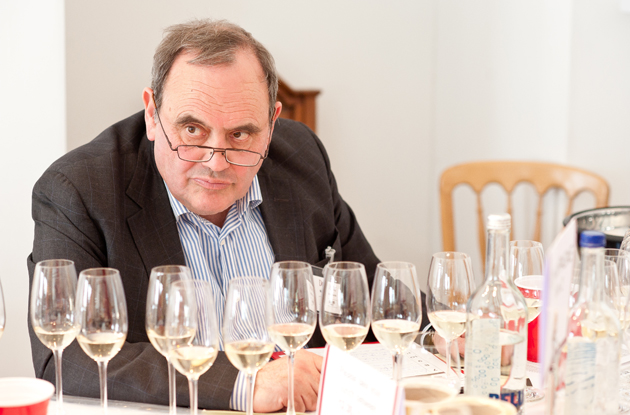Michael Edwards went from reading the Bar to dealing in Burgundy and is today one of the world’s most respected Champagne writers and tasters. Amanda Barnes interviews him on his career in wine, the tides of change he has witnessed in Champagne, how he sees the future of wine and restaurant criticism and why a dirty Vodka Martini is the only secret in his cellar…
How did you get into wine?
In my student years, I wanted to be an actor and a writer. But to please my mother, I first read for the Bar at Gray’s Inn. Alas, my heart was never in it, I found law arid but adored history and literature; I also fell in love with wine. Eventually, I deserted the casebook for the grape, driving a London delivery van of Layton’s Wine Merchants, who as a reward sent me as a stagier to their French houses and growers. Then, living in France in the 1970s, I sold fine wine for a broker, mainly in the USA, introducing aspiring greats like Ruinart Champagne; Laroche Chablis; Clos de Tart, Morey St Denis; Humbrecht Alsace and Chave Hermitage – all household names today.
How do you see the champagne we drink in 2019 compared to champagnes that were on the market in the 1970s?
The 70s were a controversial time in Champagne – the decade of technology, stainless steel over oak, high yields to meet international demand and excessive use of chemicals. It did a lot for the bank balance of the négoce but triggered a slump in quality, which wasn’t addressed until the 80s by such visionaries as Bruno Paillard and Anselme Selosse, who took the best of Champagne back to the artisanal principles of their grandfathers.
By 2019, things have improved dramatically: there’s a sharp focus on vineyard care, avoidance of pesticides and commitment to eco-friendly precepts in sustainable and organic viticulture. Biodynamics are not easy in rainy Champagne; but the Louis Roederer estate shows how it can be done exceptionally well with sufficient means and careful planning.
Which other wine region of the world has the potential to reach the same bar as Champagne?
Trento DOC in northwest Alpine Italy has huge potential for sparkling wine because of its high altitude, a boon in our crisis of Climate Change. Ferrari Trento, Italy’s finest sparkling wine, first made 100 years ago, is already on a par with great Champagne since at least 1995/2000. The best of Franciacorta, the cooler Anderson Valley in northern California, Tasmania, Two Paddocks in New Zealand, and England despite the squalls of a maritime climate, all show great promise. Mendoza, too?
On the flip side. Do you think there are any sparkling wines that are severely overrated?
It’s generally agreed that too much basic Cava is of low quality, causing some better producers to leave the DO. There are still a few great sparkling Penedès wines capable of ageing well for 10 years. Favourites include Gramona Enoteca, and Raventós i Blanc in the higher-specification Conca del Riu Anoia DO.
How do you see Climate Change affecting the wine regions of Burgundy?
The obvious perils of Climate Change are not just excessive heat, especially for Pinot Noir, but veering extremes of hail, wind and rain at the wrong moments. I’m still an optimist and believe that the most resourceful growers from Chablis, through the Côte d’Or, right on down to the Mâconnais, have the talent and expertise to master testing vintages and learn rapidly from their mistakes. We still live in a golden age of Burgundy.
How have you seen the role of the restaurant critic change in line with modern applications, such as TripAdvisor?
Of course, everyone fancies themselves as a critic on social media! But there are still plenty of discerning, unsnobbish foodies who delight in the rise of first-class bistrots attached to Michelin- starred restaurants, where you can eat well for €50/60 with a glass or two of good wine.
If you had to choose just one iconic restaurant, which one would it be and what makes it so special?
L’Arpège in Paris 7ème, close to the Rodin Museum. It’s an intimate and very original three Michelin-star restaurant that’s sympathetic to vegetarian creations, serving not only superb vegetables from the Chef-Patron’s kitchen garden in Le Mans, but also with the best Mont-Saint- Michel roast lamb you’ll ever eat. It’s a favourite of The Pol Roger, de Billy family, with lovely Pol vintages.
When you’re not drinking champagne and burgundy, what are you partial to?
Sicilian Nero d’Avola Nero Amaro, especially from Tasca d’Almerita, and Riesling for white from Mosel or Clare Valley, South Australia. No secrets in the cellar but I do like a very dry Vodka Martini.
Photo of Michael Edwards judging Champagne at Decanter World Wine Awards (credit: Decanter Magazine)

